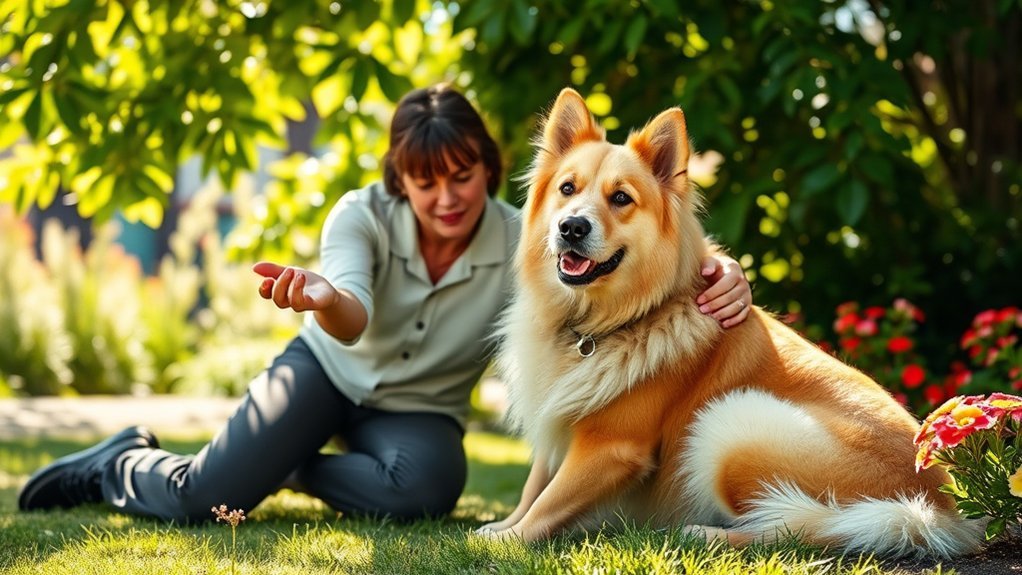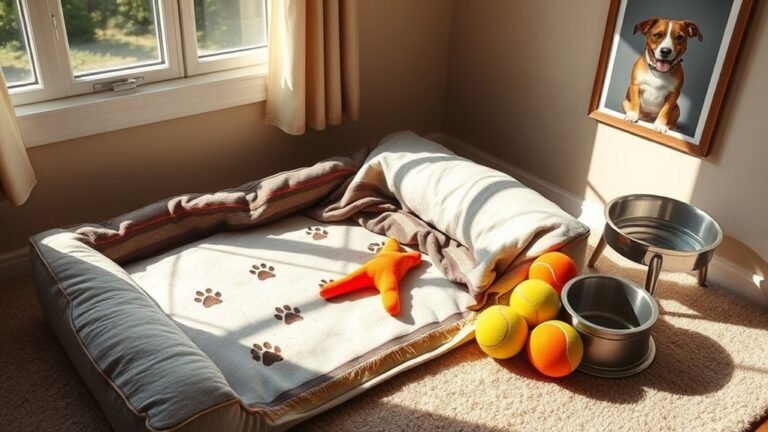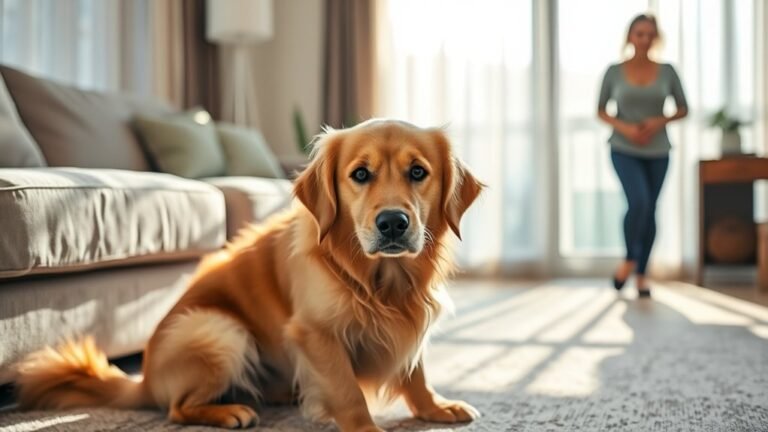10 Positive Ways to Calm an Aggressive Dog
If you have an aggressive dog, it's important to find out why they behave that way. Every dog has different things that can make them aggressive. By figuring this out, you can help create a peaceful space for both of you. Using positive methods and building trust can really help change your dog's behavior for the better.
Here are some simple tips to help calm your dog and strengthen your bond:
- Stay Calm: Your dog can sense your feelings. If you stay calm, it can help them relax too.
- Use Treats: Give your dog treats for good behavior. Positive reinforcement will encourage them to act better.
- Socialize: Introduce your dog to different people and pets in a safe way. This can help them get used to new situations.
- Practice Commands: Teach your dog basic commands like sit or stay. This gives them structure and helps them listen to you.
- Exercise Regularly: A tired dog is often a calm dog. Make sure your dog gets plenty of walks and playtime.
- Create a Safe Space: Make a cozy spot just for your dog. This can help them feel secure when they are anxious.
- Stay Consistent: Use the same commands and rules every time. Consistency helps your dog understand what is expected.
- Work with Professionals: If you're having trouble, consider hiring a dog trainer. They can give you guidance tailored to your dog's needs.
- Be Patient: Change takes time. Celebrate small victories and keep working at it.
- Show Love: Give your dog plenty of affection. Building a trusting relationship is key to helping an aggressive dog.
With these tips, you can help your dog calm down and enjoy life together. Remember, every step you take makes a difference!
Key Takeaways
- Watch what makes your dog anxious or aggressive. This helps you reduce those triggers.
- Reward your dog when they stay calm. Use treats and praise to reinforce this good behavior.
- Make a safe spot at home for your dog. Include cozy items and remove loud noises or distractions.
- Teach your dog basic commands. Practice these regularly. This builds good communication and trust.
- If you need help, ask a trainer or a vet. They can give you advice that fits your dog's needs.
Understand the Triggers
Why does your dog act aggressively in some situations? It's important to know what triggers this behavior. When you understand these triggers, you can build a better relationship with your pet.
First, try to figure out what situations, sounds, or things make your dog react. Watch how they act when they feel nervous or scared.
Pay attention to their body language. They might tense up, growl, or bark a lot when they hear certain noises or see certain people. This is their way of telling you they're uncomfortable.
When you identify what makes your dog anxious, you help them feel safer. This also helps everyone around you feel safe.
Use Positive Reinforcement
Understanding your dog's triggers is an important first step in reducing aggressive behavior. To change this behavior, use positive reinforcement. This means rewarding good behavior instead of punishing bad behavior.
When your dog stays calm in a situation that normally makes them upset, give them a treat, praise them, or show them affection right away. This will help your dog link calmness with good things. It also helps make your bond stronger.
Over time, these rewards can really help change how your dog acts. By using this kind approach, you can build a trusting relationship with your dog where they feel safe and understood.
Be patient, and remember that each small step is a win! Enjoy the process, and celebrate every progress your furry friend makes.
Create a Safe Space
Creating a safe space for your dog can help them feel calm and less anxious, especially in tough situations. To make this special spot, pick a quiet place at home where your dog can feel secure. You can set up a cozy corner with their bed, favorite toys, and soft blankets.
Make sure this area is free from noise and distractions. This way, your dog can go there whenever they need a break and feel safe.
You can also add calming scents like lavender or use soft, warm lights to make it even more inviting. Spending time together in this space will help your dog connect it with happy and safe feelings.
With a reliable spot to relax, you're helping your dog feel at ease while also growing your bond. Your furry friend will love having their own little retreat to unwind.
Implement Calm Body Language
After you create a safe space for your dog, you can help them feel calm using your body language. How you move and act matters. Here are four easy ways to show calmness:
- Move Slowly: Use gentle movements. Avoid quick or sudden actions. Keep your movements smooth and steady.
- Soften Your Eyes: Look at your dog with gentle eyes. Blink slowly to show you're relaxed.
- Stay Relaxed: Sit or stand without tensing up. Crossing your arms or slouching can make your dog feel worried. Stand tall but relaxed.
- Use a Soft Voice: Talk to your dog in a quiet, soothing voice. Don't shout or use harsh words.
Using these tips can help your dog feel secure and relaxed. Simple changes in how you act can make a big difference for them.
Teach Basic Commands
Teaching your dog basic commands is important for building trust and communication. Start with key commands like "sit," "stay," and "come." These commands help your dog learn how to behave and create a safe space for them.
Use treats or praise as rewards when your dog does well. This makes learning fun and strengthens your bond. Practice these commands regularly to help your dog remember them.
Be patient. Sometimes, it takes a bit longer for some dogs to learn. With your help and understanding, you'll create a well-behaved dog that feels good about your relationship.
Desensitize to Stressors
When your dog faces stress, like loud noises or new people, helping them feel better can reduce bad behavior. Here are four easy ways to help your dog:
- Start with Soft Sounds: Play quiet recordings of loud noises. Slowly make the sounds louder as your dog starts to feel okay with them.
- Meet New People Slowly: Let your dog see new people from a distance. Once they feel calm, let them get closer.
- Give Treats for Calmness: When your dog stays calm in a tough situation, give them treats or praise. This helps them feel good about what scared them.
- Practice Often: Do these steps regularly. This builds your dog's confidence and helps them feel safe.
Following these tips can help your dog relax and be friendlier.
Encourage Relaxation Techniques
To help your dog relax, you can use some easy techniques. One good start is practicing breath control together. Show your dog how to take deep, slow breaths by doing it yourself. This helps calm both of you down and makes your bond stronger.
Another great way to soothe your dog is through massage. Use gentle, smooth strokes on areas like their neck, spine, and legs. These spots often hold stress, and a good massage can help melt that tension away.
Always watch how your dog reacts to these techniques. If something doesn't seem to work, change your approach until you find what they like.
Creating a quiet space for your dog, along with these relaxing methods, can make them feel safe and peaceful. This way, your dog can be happier and less anxious.
Provide Adequate Exercise
Giving your dog enough exercise is very important, especially for aggressive dogs. Regular activities can help calm them down, lift their spirits, and use their energy in a good way.
By making exercise plans that fit your dog, you support their body and mind. Here are some fun exercise ideas:
- Daily walks: Take your dog for a walk for at least 30 minutes. This helps them see new things and smell different scents.
- Play fetch: Throw a ball or toy for your dog to chase. This is a great way to let them release some energy.
- Agility training: Create a simple obstacle course in your backyard. Jumping over things or weaving through cones can be fun and make them think.
- Doggy playdates: Let your dog meet and play with other dogs. This helps them make friends and get exercise at the same time.
Seek Professional Help
If your dog is acting aggressive often, it's a good idea to get help from a professional. This isn't just about fixing the behavior; it's also about keeping your dog healthy.
First, take your dog to the vet. They can check if there are any health problems that might be causing the aggression.
Once you know your dog is healthy, look for a certified dog trainer or animal behaviorist. These experts can teach you ways to change how your dog acts. They understand dog behavior well and can show you different methods that fit your dog's needs.
Remember, you're not the only one facing this issue. Many other dog owners have gone through similar problems and found ways to help their pets.
Getting help is a smart way to build a happier relationship with your furry friend.
Be Patient and Consistent
Even after you get help from a trainer, it takes time to use what you've learned.
You need to be patient and stick with it for your dog to get better.
Here's how you can create a good space for learning:
- Keep a training schedule: Set regular times to practice. This helps your dog learn better.
- Use rewards: Give treats or praise for small wins. This makes your dog excited to learn.
- Practice every day: Add training to your daily activities. This helps build trust between you and your dog.
- Stay calm: Your mood affects your dog. If you stay relaxed, your dog will feel calm too.
Frequently Asked Questions
Can an Aggressive Dog Ever Be Completely Cured?
Yes, an aggressive dog can get better. With the right training and care, you can help your dog learn good behaviors. This process takes time and patience.
While some people use the word "cure," it's more about helping your dog feel calm and safe. Many dogs can become happier and more relaxed with consistent effort. Take it one step at a time, and you can see a positive change in your dog's behavior.
What Should I Avoid Doing Around an Aggressive Dog?
When you are near an aggressive dog, keep calm. Don't move quickly or act tense. This could scare the dog even more. Avoid using rough handling. It can make the dog feel more anxious. Instead, stay relaxed and confident. This helps the dog feel safe and understood. Remember, your body language matters. Keep it soft and steady. Speak softly if you need to, but don't shout or make loud noises. Your goal is to make the dog feel at ease, not more upset. Stay safe and be smart around them!
Are Certain Breeds More Prone to Aggression Than Others?
Some dog breeds might show more aggression because of their genes. But how you train your dog is very important, too. Positive training can help make your dog friendly and well-behaved.
If you know which breeds are more likely to be aggressive, you can prepare better. You can train your dog in a way that makes living together happier for both of you. Building a good bond with your dog makes a big difference. Remember, a well-trained dog can be a great friend!
How Long Does It Take to See Improvement in My Dog?
It usually takes a few weeks to see improvement in your dog. This time can change based on how often you use training techniques and how regularly you watch their behavior. Stay patient and keep at it. This effort will help you grow closer to your dog while supporting their progress.
Can Medication Help With My Dog's Aggression?
Yes, medication can help with your dog's aggression. It works best when you also use behavioral therapy. Talk to your vet to find the right plan for your dog's needs. They can help you decide what will work best for your situation.







